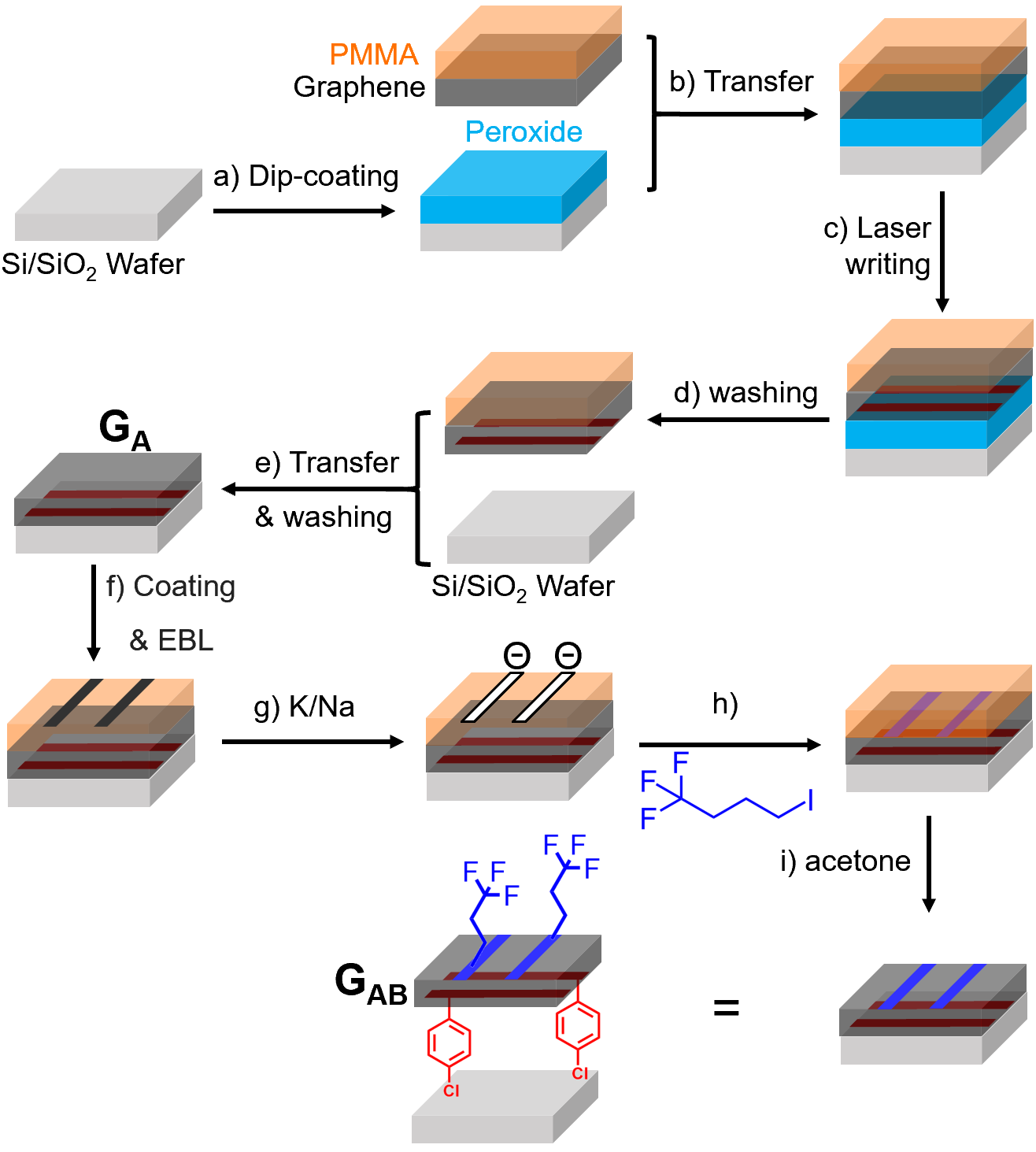Planar Carbon Lattices
RTG-2861-PCL
A3 - Covalent patterning of graphene
Principal investigator: Prof. Dr. Andreas Hirsch, FAU Erlangen, [webpage]
Doctoral researcher in the 1st cohort: Kevin Gerein
Doctoral researcher in the 2nd cohort: Open position
Both covalent and non-covalent functionalization of graphene provides a highly suitable tool for the modification of the outstanding properties of this fundamental PCL.[1-3] Supported by the chemical manipulation the processibility of graphene manufacturing can be improved considerably, since, for example, the dispersibility in liquid media increases. Moreover, the electronic properties and band structure of the remaining π-electron system can be modified to a very large extent. Finally, the binding of functional organic molecules to the graphene surface allows for the combination of properties with those of many other compound classes. In recent years, a variety of approaches for graphene functionalization have been reported. The next step of graphene chemistry and manufacturing, however, namely the covalent graphene patterning has been much less explored, since so far, the location and region chemistry of covalent graphene binding has not been controlled. Structured graphene, however, where intact networks of graphene ribbons are located next to functionalized areas present highly attractive future materials and is the challenging goal of this project.

Figure: Example for a Janus-type covalent patterning of graphene based on laser writing and electron beam lithography.[2]
Thesis topic 1st cohort: Laser induced patterning of graphene
The aim of the thesis is to exploit the covalent patterning of graphene aiming at the development of unprecedented structured planar carbon networks. These investigations will be based on our recent success[1-3] of highly efficient antaratopic binding sequences, followed by radical or electrophilic termination steps (Figure). Covalent surface structuring shall be accomplished either by pre-patterning or by controlled laser activation of photo-labile precursor molecules. Moreover, top-down approaches and bottom-up strategies shall be combined in order to create highly functional architectures. Next to lithography and light driven processes, new stimuli for initiating the covalent binding of molecular addends such as electrostatic fields and STM tip manipulation shall be applied. Pre-pattering shall be done with Halik and Weber. Combination with bottom-up strategies will be realized with Maier and Feng. The structural and functional characterization of the resulting 2D-nanolabs shall be carried out by, e.g., NMR (Brunner), Raman microscopy (Maultzsch), SPM (Maier), XPS (Steinrück), time resolved optical spectroscopy (Guldi) and further supported by calculations (Heine).
Thesis topic 2nd cohort: TBA
[2] L. Bao, M Kohring, H. Weber, F. Hauke, A. Hirsch, “Covalently Doped Graphene Superlattices: Spatially Resolved Supratopic- and Janus-Binding”, J. Am. Chem. Soc. 2020, 142, 16016.
[3] T. Wei, M. Kohring, H. B. Weber, F. Hauke, A. Hirsch, “Molecular Embroidering of Graphene”, Nat. Commun. 2021, 12, 552.
